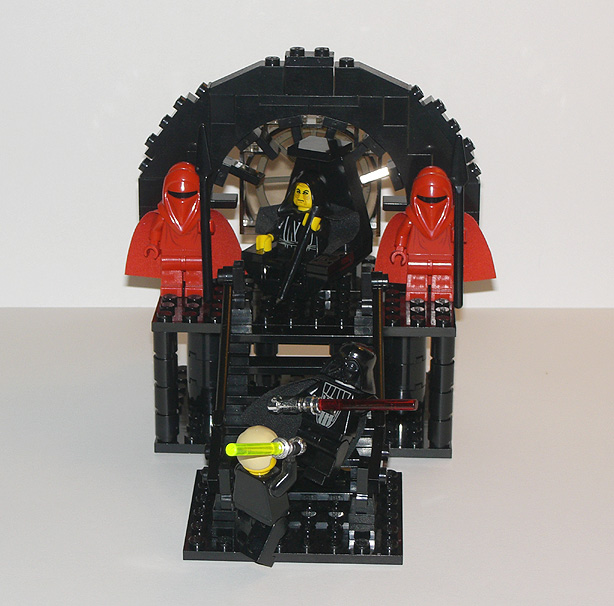
| Please visit the other 'Bricks' blogs: |
|
Tuesday, June 13, 2006
Why didn't I think of this name?
K-hatch has come up with a much better name for the larger scenes that I've been calling vignette-like-creations (or VLCs) -- bignettes. That's so simple and obvious once you see it. What do you guys think? Should I keep calling these larger scenes VLCs, or start referring to them as bignettes? Anyway, one of his first bignettes is throne.


Subscribe to:
Post Comments (Atom)
7 comments:
Oh, nice term! Very natural.
Bignettes all the way!
A question I've been pondering though: when are vignettes (or rather, bignettes) so large that they should be referred to as dioramas?
Okay, I agree, bignettes it is.
Linus, I don't know the answer to your question. At first I strictly limited myself to blogging on the smaller size (~8x8) creations, feeling that these were the "true" vigs. Then there were two contests based on 16x16 footprints, and I decided to break my self-imposed rule and blog them, but I wanted to call them something else, vignette-like creations, or VLC's. I was going to limit myself to 16x16, but I have also referred to 32x32 creations as VLCs. I agree, though, that at some point something is not the same. A vig is not just a scene, but involves some size limitations that affect the building process. Choices are made due to the footprint, some things are implied rather than fully shown, etc. The VLCs (bignettes) that I've blogged have, hopefully, shared some of the same spirit of the smaller vigs. LTC layouts, moonbase displays, etc are also frozen scenes, but these seem to be in a wholly different spirit. So to me it's not about size, per se, but about the much more vague feel of the MOC. I dunno, does this make any sense? It's late and I might just be babbling.
It makes sense. In other words: with a vignette you start with the base and build a scene on that, and with a diorama, you expand the scene to make room for all of the different aspects you want to involve. The static nature of the base is the key, if you will - as that is usually what imposes the limitations on a vignette?
Yes, I think that is what I have in mind. In this posting I said that in my opinion a good vig is a slice of life that features the use of space, action, storytelling and emotion. To use one of my own creations, I never thought of my hippogryph hunters as a bignette, even though it does (IMO) achieve action, storytelling, and some humor. What it is lacking is any sense of space limitations that enforced my building decisions. In contrast, this scene does make such decisions - only showing a part of the train but suggesting the rest - which are at the heart of the smaller vigs.
It seems like a good definition, but it still feels slightly odd to leave size entirely out of it. That would make my two ninja-themed vignettes bignettes, without question.
But after starting a bigger project with a set base that I won't expand, it would be odd to call it a vignette. In my head, a vignette is not 32x64 studs, even if it follows the rule regarding the static base and will only show part of the motif in question.
Continuation: perhaps it is a dynamic element (movement, or minifigs running to or coming from someplace uncertain) that should be "limited", and not just a structural element (a building)?
A diorama usually has room to show all of these things.
But perhaps I'm just trying to cleave a hair - usually, the definition of what a MOC is comes pretty natural. Interesting discussion, though!
Post a Comment